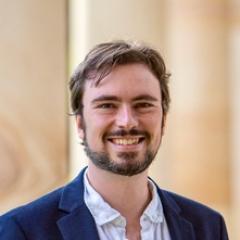Data analysis with the James Webb space telescope
Project level: Honours; PhD
The James Webb Space Telescope, which at $10B USD is history's most expensive single astronomical project, is finally due to launch in late 2021 for a five-year mission. A 6m infrared telescope billed as the successor to the Hubble Space Telescope, it is equipped with a range of instruments for imaging and spectroscopy from the near to the mid infrared. Thousands of scientists have projects using JWST, whose time is worth $250k/hr, and it is important to optimize how it works and push its limits to get the best science out!
There are several interesting directions to go. One is to collaborate with the team working on the Aperture Masking Instrument on high angular resolution astronomy - how do we get the best possible signal-to-noise and resolution for imaging the formation of planets and the cores of active galactic nuclei? Another is to look at the bright end: can we use JWST to look at extremely bright objects, such as naked-eye stars or Solar System asteroids? It would ordinarily saturate, but we believe we can overcome this with methods like the 'halo photometry' I helped develop for Kepler.
This is a very open-ended research direction in pushing the limits of JWST, overlapping with the halo photometry and automatic differentiation projects but from a JWST observational perspective.

